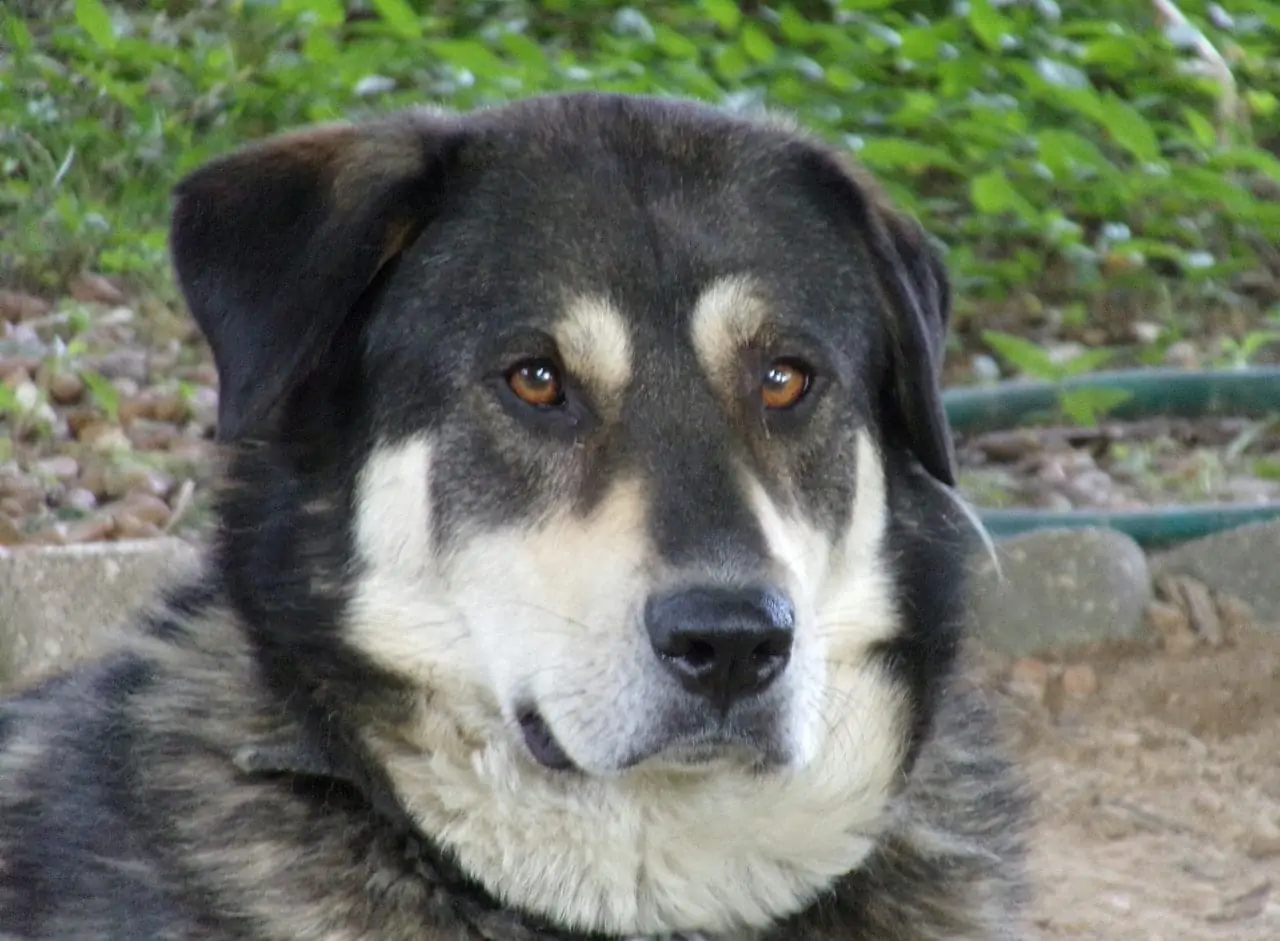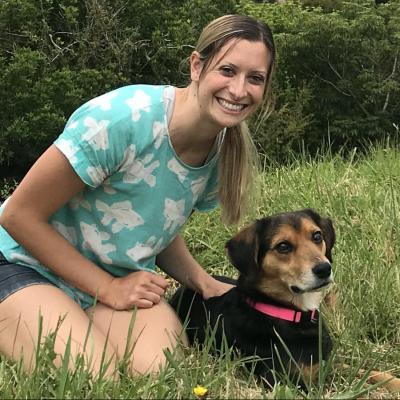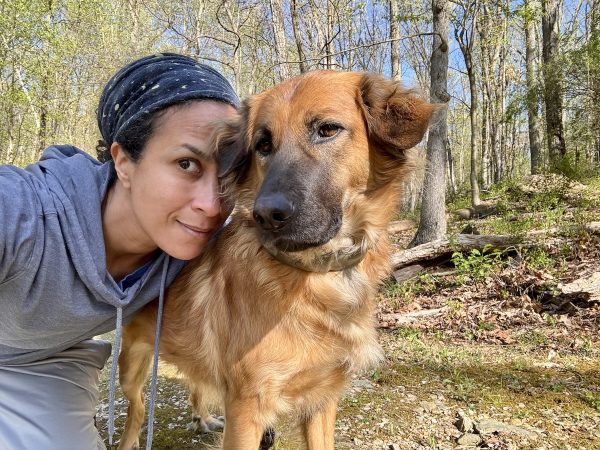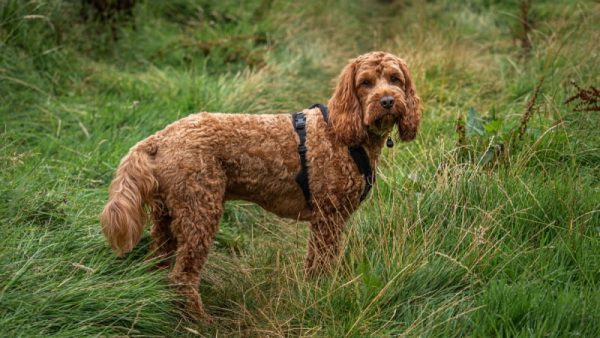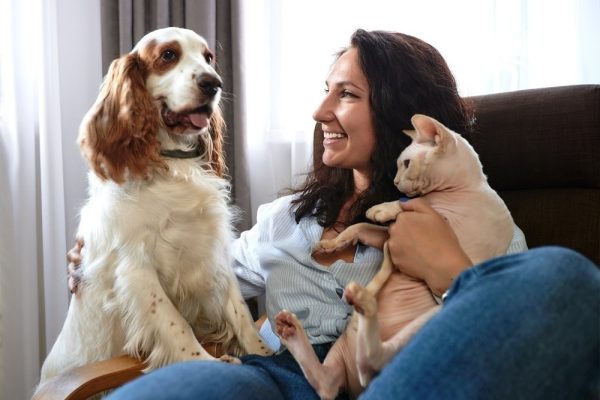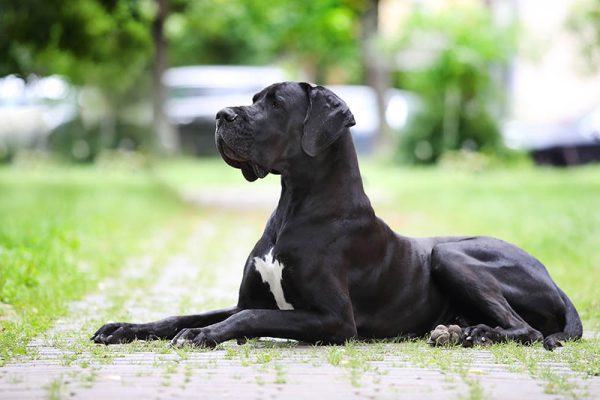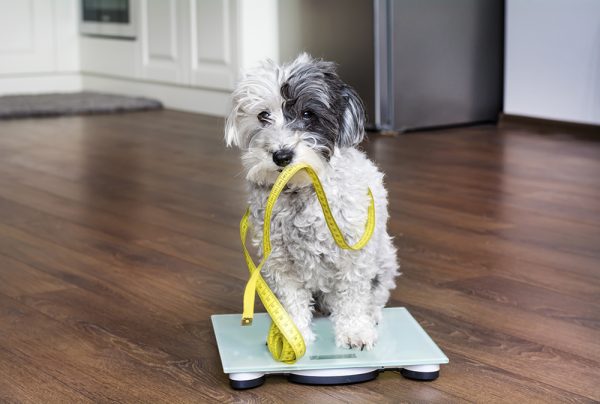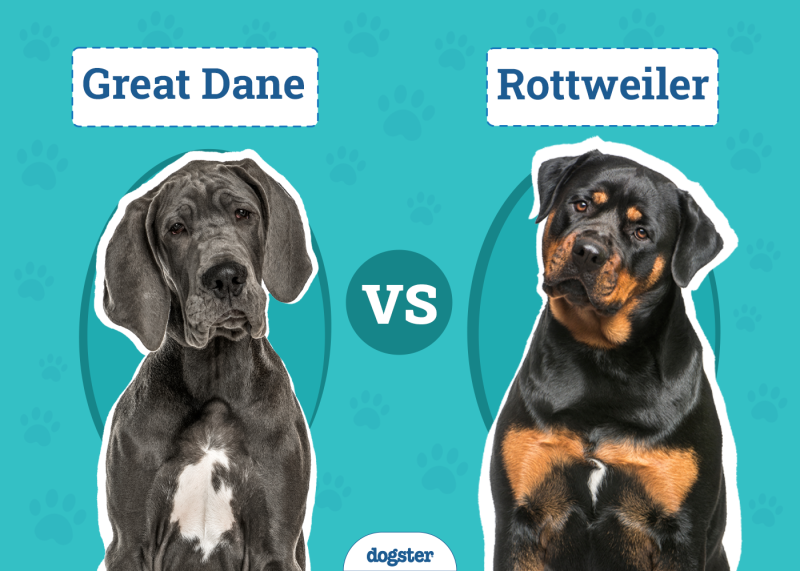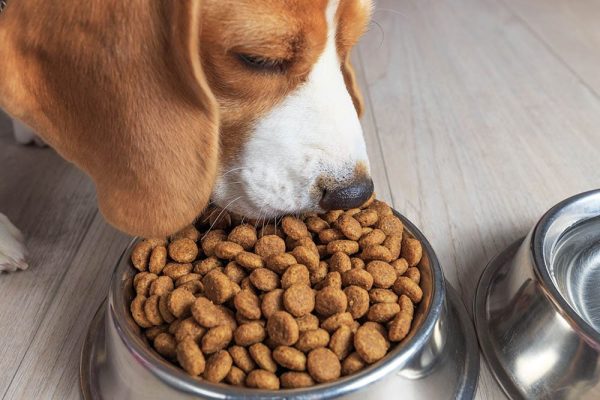In this article
View 8 More +The Labrador Retriever and the Alaskan Malamute are robust, full of personality, and their offspring is sure to make a wonderful family companion!
Also known as Labramute, the Alaskan Malador is a designer dog and the excellent mix of the Labrador Retriever and the Alaskan Malamute, making it a high-tempo breed and a popular pet among dog fanciers.
The Alaskan Malador is a large breed that serves tons of personalities in equal measure and a total “people-dog”. It is always on the go and doesn’t shy from showing affection and demanding the same from the people it loves.
Breed Overview
Height:
22–27 inches
Weight:
60–85 pounds
Lifespan:
12–14 years
Colors:
White, blue, silver, red, brown, gray, black
Suitable for:
Active families, those looking for low-shedding dogs
Temperament:
Loyal & loving, intelligent, easy to train, friendly, gets along with other pets
The Lab Malamute mix has existed for a few decades, although there’s not much information about it from the records. It was only a matter of time before it became a favorite in many American homes—not surprising with the Lab and Malamute as its parents!
Labramutes take the best from their ancestry as working breeds (Malamute side) and as a sporting dog (Labrador Retriever side). These dogs also have a sweet nature befitting a family pet and wouldn’t mind being the center of attention wherever it goes.
What else does this hybrid carry to its name? Keep reading and find out!
Alaskan Malador Characteristics

Alaskan Malador Puppies
Taking care of an Alaskan Malador puppy requires patience, consistency, and a commitment to providing the puppy with the care and attention they need to grow into a healthy and well-behaved adult dog. Alaskan Maladors are a large and active breed, so it is important to provide them with plenty of exercise and mental stimulation to help them stay healthy and happy.
It’s important to provide them with a healthy and balanced diet, as well as plenty of opportunities for exercise and play. This breed enjoys being active and exploring new environments, so be sure to provide them with plenty of opportunities for physical activity and mental stimulation.
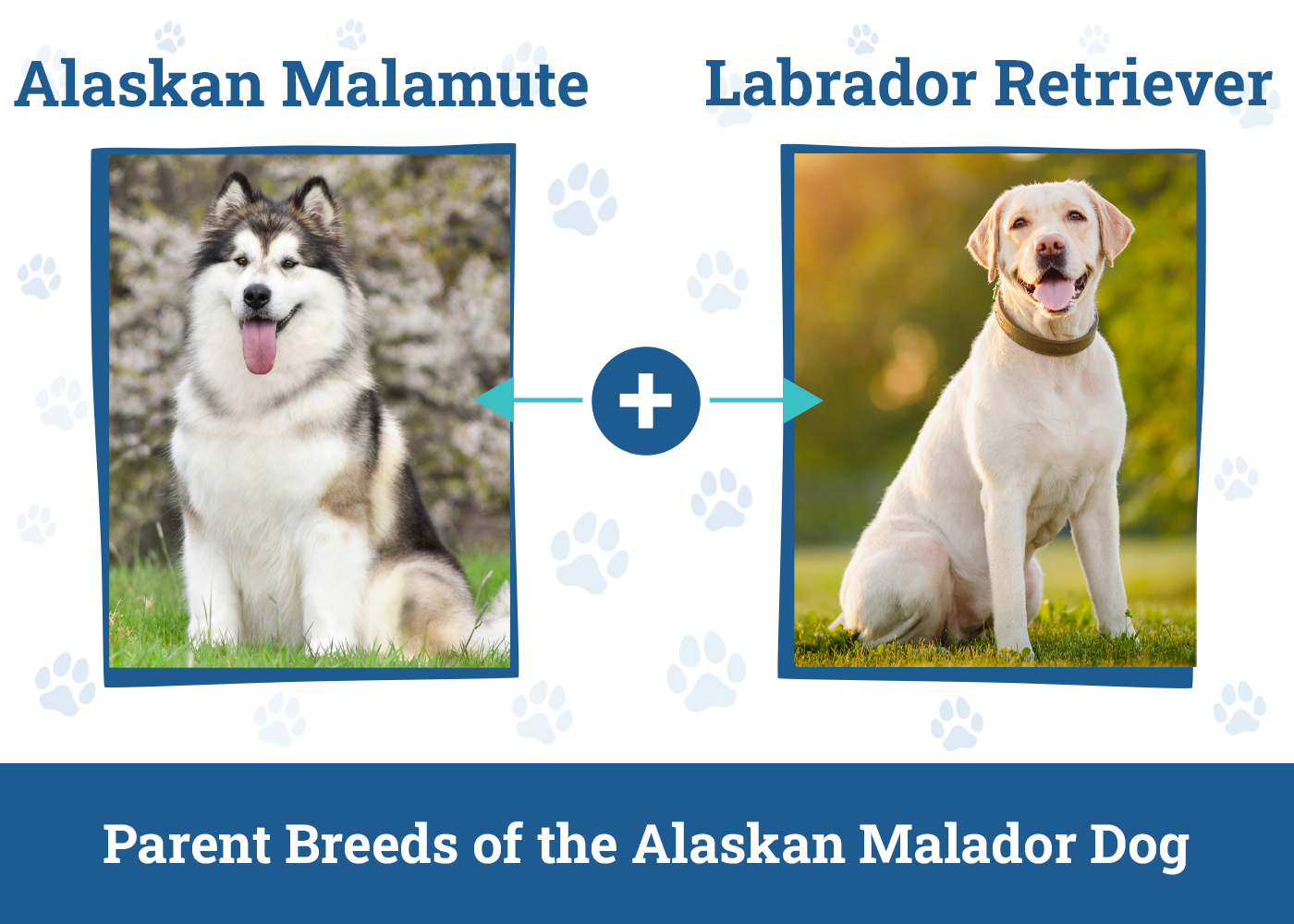

Temperament & Intelligence of the Alaskan Malador
The Labramute’s powerful lineage makes it a medium-large dog breed and full of energy that warrants an outdoor lifestyle. These dogs are playful, robust, energetic, love to explore, and are at their best when they spend their days hiking or engaging in lots of fun-filled activities like swimming and frisbee.
The Alaskan Malador is also an intelligent, easy-going, and docile breed and wouldn’t care about anything else around him as long as he knows you love him. In addition, they are generally unproblematic, which means occasional barking wouldn’t be an issue.
Are These Dogs Good for Families? 🧑🧑🧒
These dogs tend to be friendly, devoted, and loyal to their owners, as long as you give them borderless affection and attention. They form incredible bonds with their family members and rely on them heavily.
Unfortunately, being people-oriented creates intense attachment issues so much so that Labramutes are more prone to separation anxiety than other breeds.
Owners can combat this trait by socializing and bonding the dog to all family members adequately during their puppyhood. You can also maintain consistency and keep the dog’s schedule unchanged as much as you can.
Maladors tend to thrive in households with children thanks to their playfulness and mischievous temperaments. However, their sheer strength and size can be a threat to young kids, and adults should not leave them unsupervised.
Ensure that you monitor their interaction during playtime to avoid accidents and incidents like your pup bumping into your young child.
Does This Breed Get Along With Other Pets?
This breed is friendly to humans and other pets alike, so it can thrive in any multi-pet household, assuming you socialize the animal early.
The only caution with Labramutes is that you can expect potential aggression if you pair them with other male canines. They also tend to have a high prey drive and may require keenness when you let the dogs around smaller pets.

Things to Know When Owning an Alaskan Malador:
Food & Diet Requirements 🦴
These dogs are the offspring of two robust dog breeds that contribute to their large sizes and unmatched energy levels.
Their sizes, energy, and activity levels make these dogs heavy eaters, requiring about 3 cups of high-quality kibbles, divided into two servings a day. However, the amount depends on the age and how active your pup is. Puppies eat less and only require this after they are a year old.
A breed that gets this big also requires you to supplement its diet with products like fish oil. You can also feed your dog cartilage for chondroitin and glucosamine to boost your dog’s nutritional needs.
Don’t undo your healthy feeding efforts by overfeeding your pup, though. Making it overweight predisposes it to medical conditions like hip and elbow dysplasia.
https://www.instagram.com/p/B-Pyv28I9HN/?utm_source=ig_web_button_share_sheet
Exercise 🐕
Alaskan Maladors are an active and energetic breed, and limiting them to walks isn’t enough to wade off their excess strength. They are renowned for their stamina and would prefer vigorous workout plans for physical and emotional stimulation.
For this reason, ensure that you balance out their physical activity, ranging from daily walks to strenuous activities like hiking, swimming, and running in the park or yard (possibly in other dogs’ company).
The dog is so active and requires not less than 1 hour 30 minutes of physical activities every day. For this reason, it requires a lot of yard space, which means that living spaces like apartments may not be suitable for this well-built pup.
You can also supplement physical activities with mentally demanding activities like obstacle courses and retrieving exercises.
Providing ample stimulation makes this dog docile and well-adjusted. However, an inadequately exercised Malador is likely to be problematic and may start acting out by chewing on furniture and displaying aggression.
Training 🎾
You may want to tame this dog’s behavior from puppyhood unless you want to end up with a heavily-built problematic dog.
The good thing is that Maladors are intelligent, eager to please, and active, especially if the Labrador side of him is more dominant. So, expect a dog that’s keen on commands and can adjust to various training tricks you use.
Stay consistent, gentle, utilize reward-based techniques, be in command, and ensure you establish yourself as a confident pack leader if you want to get an obedient and well-behaved dog.
Grooming ✂️
A Malador’s dense coat offers insulation during the chilly winter, but mate, it can shed! This dog generally has moderate grooming needs except when it’s winter. However, it sheds massively during cold seasons, so you may need to find a good pet hair vacuum cleaner.
You may also want to groom your dog outdoors and strip the coat of dead hair twice a day during the shedding period. Also, get your pup used to regular bath times, although you only need to wash it when you must.
Other grooming needs include regular nail trimming and weekly ear-cleaning to curb ear infections. Also, ensure that you brush your dog’s teeth at least thrice a week.
Health & Conditions 🏥
It’s always tricky to predict potential health issues when talking about a crossbred or hybrid dog, as it’s impossible to know which genetic traits it will or won’t inherit. The best thing to do is become familiar with the more common health conditions seen in both breeds so that you can be prepared and know what to be looking out for.
With that in mind, some of the potential health issues that may affect the Malador include:
Hip & Elbow Dysplasia
Hip and elbow dysplasia are particularly prevalent in the Labrador, and large breeds like the Malamute are also affected more often than small ones. Hip and elbow dysplasia is the result of a malformation of the affected joint/s, which affects the dog’s mobility, leading to chronic inflammation, pain, and arthritis.
Milder cases can often be managed conservatively, using exercise modification, weight management, joint supplements, and anti-inflammatory medications. More severe cases may require surgery.
Hip and elbow dysplasia can present from quite a young age, and may appear as mild to severe lameness, unusual gait (walk), or difficulty sitting or standing. Lameness in the Malador should always be taken seriously and examined by your vet.
Ear Infections
The fluffy and floppy ears of the Malador can make them prone to ear infections, particularly if yours is fond of swimming. Maintaining clean, dry ear canals is a must, and the fur around the ears should be kept short to avoid matting.
Polyneuropathy
A condition seen in young Malamutes, resulting from the demyelination (stripping) of the peripheral nerves. The condition can be mild to severe, with signs from weakness and incoordination of the limbs, exercise intolerance, delayed or reduced reflexes, hyperesthesia (increased sensitivity to touch/pain), muscle atrophy, and paralysis.
There is no specific treatment for the condition. Milder cases will often recover eventually with supportive care, but more severe cases may not survive, or require euthanasia. Genetic testing is available to reduce the risks of asymptomatic dogs passing the disease onto offspring.
Bloating
Bloat can occur in any breed, but larger, deep-chested dogs are more likely to suffer. If left untreated, bloat can progress to a life-threatening condition called gastric dilatation and volvulus (GDV).
Ways to reduce your Malador’s risk of bloat and GDV include:
- Raising their food and water bowls to elbow height
- Using slow-feeder bowls to prevent gulping of food
- No meals 2 hours before or after exercise
Be on the lookout for abdominal swelling, burping, non-productive retching, and depression. Seek immediate veterinary attention if you think your dog may have bloat; delaying treatment can be fatal.
Epilepsy
Also known as idiopathic epilepsy, this is a seizure disorder where no underlying cause has been identified. It first appears in younger dogs, between 1 and 5 years old.
The seizures can range from mild to severe, and treatment will depend on the severity and frequency of the episodes. Most cases can be well controlled with medication, but some will continue to progress despite medical intervention.
Hypothyroidism
Hypothyroidism in dogs occurs when the thyroid glands fail to produce enough thyroid hormones. It mainly affects middle-aged dogs, and you may notice symptoms like recurrent skin & ear infections, lethargy, weight gain, and symmetrical hair loss (alopecia), particularly under the collar, over the back, or on the tail.
Once diagnosed, this is a very manageable condition but usually requires lifelong medication.
Day Blindness
An inherited condition caused by the degeneration of light receptor cells in the retina (cones). Affected dogs are particularly sensitive to light, and are unable to see in bright light/daytime. There is no specific treatment for the condition, with lifestyle management and the trial of sunglasses most commonly used. Genetic testing is available.
Chondrodysplasia
This is a genetic condition sometimes seen in the Alaskan Malamute, that presents as “dwarfism” (think Dachshunds and Corgis). The condition is manageable, but good breeders should be screening their dogs to eliminate this mutation from the Malamute gene pool.
- Skin and ear disease
- Day Blindness
- Hypothyroidism
- Arthritis
- Obesity
- Epilepsy
- Bloat/GDV
- Hip and Elbow Dysplasia
- Chondrodysplasia
- Polyneuropathy

Male vs Female
Both male and female Alaskan Malador dog breeds make great pets in the home. The only difference between the two is that the male tends to be larger than the females.
And yes, you can always pair a male and female Malador if you want. The only problem comes when you keep two male Malador dogs together, as they tend to display aggression towards each other.

3 Little-Known Facts About the Alaskan Malador
1. This mix usually has a body type like the Lab…
This dog can inherit any physical trait combination from either of its parents, but it generally looks like the lean and sporty Labrador Retriever.
2. …but their facial features are closer to the Malamutes.
Labramute dog breeds may look like Labrador Retriever, but their facial and body markings tend to lean towards their Malamute parentage.
3. They are not the best at staying alone.
You should blame a Malador dog’s attachment trait and tendency to develop separation anxiety on its Labrador Retriever bloodline.

Final Thoughts
You should own an Alaskan Malador if you are an active family or person and would like to stay so for a long time. This dog requires attention, meaning you must be willing to spend time with it, and organize daily playtimes, training, and the exercise it needs.
One sure thing is that for all the attention, love, and affection you will give your Labramute, he will give it back with joy. Just ensure you have enough space for him on your lap, heart, and home, and are prepared for the shedding.
Featured Image Credit: Brandy Jones, Pexels
